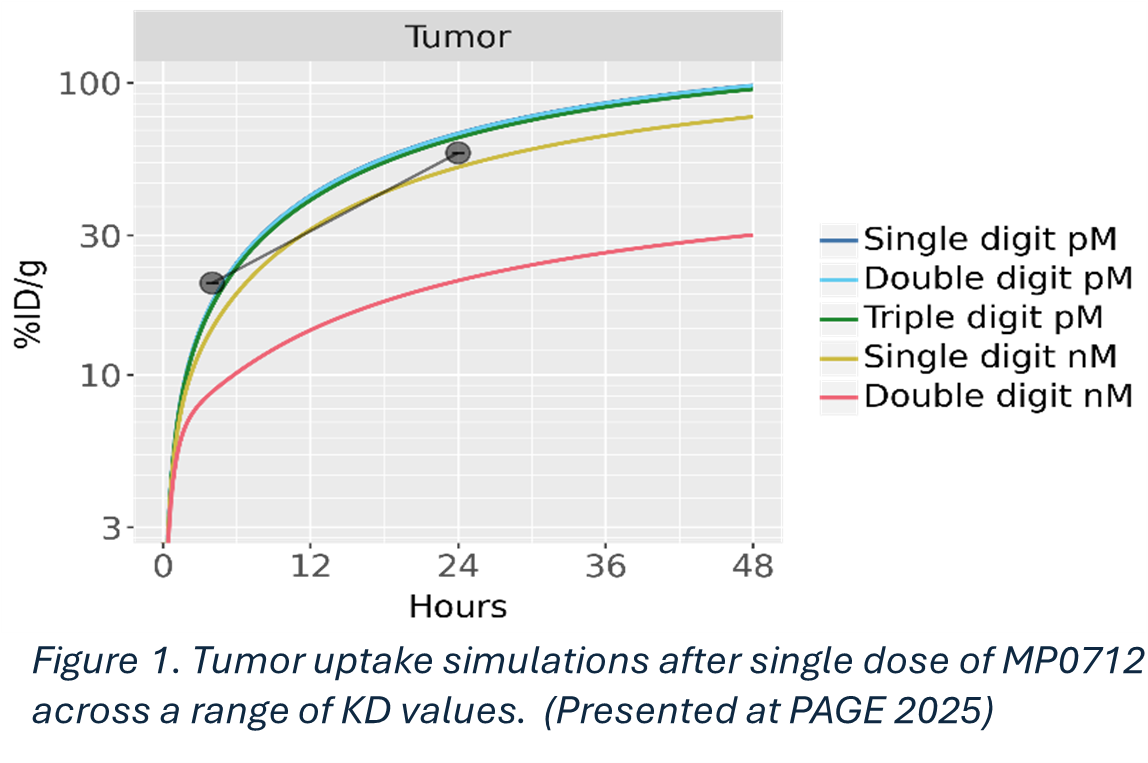November 14, 2025

Model-Informed Drug Development Framework for the Development and Dose Optimization of Targeted Radiation Therapies
Explore our end-to-end framework for using MIDD with TRTs, specifically with PSMA targeting radio-ligands, in this poster.

Senior Director, QSP
Joshuaine Grant is a Senior Director in Quantitative Systems Pharmacology at Certara with more than 25 years of experience integrating biophysics, disease biology, and quantitative modeling to advance drug development. She leads collaborative projects that use mechanistic and translational QSP modeling to inform key decisions from discovery through the clinic. Her broad experience across biologics and complex therapeutics has supported Certara’s growing leadership in radioligand and targeted radiotherapies.

Sr Scientist, QSP
Sarah Minucci is a QSP modeler with a background in applied mathematics and systems biology. She guides strategy and builds fit-for-purpose models to support drug development from early feasibility to first-in-human studies. Specializing in biologics, she has helped to spearhead modeling best practices for targeted radiopharmaceuticals at Certara and continues to advance Certara’s QSP targeted radiopharmaceuticals knowledge repository.
FAQs
At what stage of development for targeted radiopharmaceuticals can QSP modeling be used?
QSP modeling can be used at any stage, from discovery to the clinic. At early stages, QSP modeling can inform optimal drug and target properties and carrier/ligand combinations. It can also help design biodistribution studies and explore mass dose/activity balances in preclinical species. Finally, QSP modeling aids in translating preclinical insights into first-in-human dose justification and study design. QSP modeling builds confidence and reduces uncertainty in accelerating targeted radiotherapy development from bench to bedside.
What are the key benefits of using QSP modeling for targeted radiotherapies compared to traditional methods?
QSP modeling offers several benefits in the context of targeted radiotherapies:
- It mechanistically links receptor kinetics, radionuclide decay, carrier metabolism, and tissue distribution.
- It enables the exploration of “what-if” scenarios (e.g., different binding affinities, receptor densities, tumor sizes) to optimize lead selection.
- It helps predict tumor vs healthy organ exposure (therapeutic index) and thus supports dose optimization and risk-benefit assessment.
- It improves the translational bridge from animal to human by modeling species-specific biology and kinetics rather than relying solely on body-weight scaling or empirical rules.
Learn more about Quantitative Systems Pharmacology Consulting Services
Leverage Certara’s QSP team to answer questions about target prioritization, dose determination, assessing efficacy or toxicity, evaluating against competitors in the market, and more.

See Certara IQ in Action






